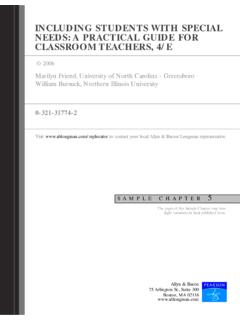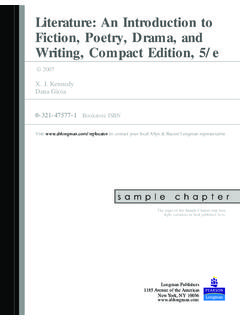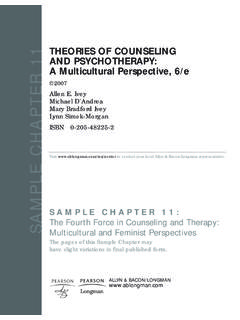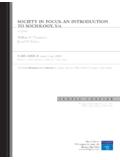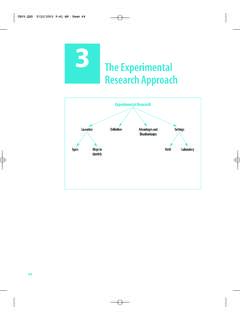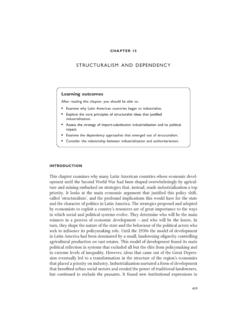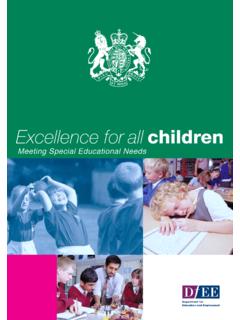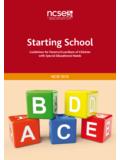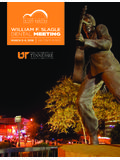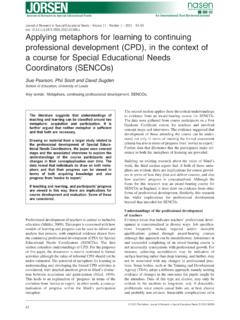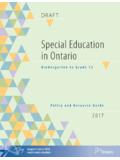Transcription of CONSULTATION, COLLABORATION, AND …
1 consultation , collaboration , CHAPTER 2. AND TEAMWORK FOR STUDENTS. WITH special NEEDS, 5/E. 2005. Peggy Dettmer Linda P. Thurston Norma J. Dyck ISBN-13: 9780205435234. ISBN-10: 0205435238. Chapter 2. FOUNDATIONS AND FRAMEWORKS FOR. COLLABORATIVE SCHOOL consultation . ALLYN & BACON/LONGMAN. 6/24/2004 11:53 AM Page 35. CHAPTER TWO. FOUNDATIONS AND. FRAMEWORKS FOR. COLLABORATIVE SCHOOL. consultation . Structures Interrelationships Learning Environments consultation , collaboration , and teamwork probably began around cave fires ages ago. As people learned about the ideas of others in the group and expressed their own opinions, they honed skills of communication and collaboration .
2 As they planned hunting and food-gathering forays, and then began to plant and harvest, they developed strategies for teamwork. They most likely assessed their processes and outcomes to achieve greater success the next time. Collaborative work groups have sustained and improved the quality of life from early ages to modern times with ever-escalating significance and consequence. Interpersonal skills now are becoming more and more essential for our survival and progress in an in- creasingly complex, interconnected world. All members of every society must interact ef- fectively and work together cooperatively if the world is to flourish.
3 Educators who are successful in using these sophisticated skills will model for young people the processes they need to survive and prosper in the world they will inherit. The opening graphic for this chapter again accentuates the three organizational fea- tures of the book. The content (triangle) for Chapter 2 features structures (triangle) in the context (square) of learning environments, and interrelationship processes (circle). FOCUSING QUESTIONS. 1. How do educational reform and school improvement issues signal the need for collaborative school consultation ?
4 2. What is the concept of the inclusionary school? 3. What is the significance of No Child Left Behind (NCLB) for collaborative school consultation ? 35. 6/24/2004 11:53 AM Page 36. 36 PART I CONTEXTS FOR WORKING TOGETHER IN SCHOOLS. 4. Are there theoretical and research bases for collaborative school consultation and what is its history? 5. What structural elements are key components in developing collaborative consultation methods to fit school contexts for serving student needs? 6. What models of consultation , collaboration , and teamwork have evolved in education?
5 7. How might educators tailor existing models and other structural elements into useful school consultation methods for their school contexts? KEY TERMS. American with Disabilities mainstreaming Resource/Consulting Teacher Act (ADA) method Program model (R/CT). approach mode School consultation collaborative school model Committee model consultation No Child Left Behind (NCLB) Stephens/systems model IDEA (Public Law 101-476) perspective system IDEA 1997 prototype triadic model inclusion/full inclusion Public Law 94-142 Vermont Consulting Teacher intersubjectivity regular education initiative Program model least restrictive environment (REI).
6 (LRE). VIGNETTE 2A. The setting is a school administration office where the superintendent, the principal, and the spe- cial education director are having an early-morning conference. special Education Director: I've assigned five people on our special education staff to begin serving as consulting teachers in the schools we targeted at our last meeting. Principal: I understand the high school is to be one of those schools. I'm all for trying a new approach, but at this point I'm not sure my staff understands how this method of service is going to affect them.
7 Superintendent: Are you saying we need to spend a little more time at the drawing board and get the kinks out of our plan before tossing it out to the teachers? Principal: Yes, and I think the parents also will want to know what will be happening. special Education Director: I've been compiling a file of theoretical background, research studies, program descriptions, even some cartoons and witty sayings, that focus on consul- tation and collaboration approaches. Let me get copies of the most promising material to you and the principals of the other targeted schools.
8 Perhaps we should plan in-service sessions for teachers and awareness sessions for parents before we proceed. Superintendent: That sounds good. Draft an outline and we'll discuss it at next week's meet- ing. I'll get the word out to the other principals to be here. 6/24/2004 11:53 AM Page 37. CHAPTER TWO FOUNDATIONS AND FRAMEWORKS FOR COLLABORATIVE SCHOOL consultation 37. SCHOOL IMPROVEMENT ISSUES. During the 1970s, 1980s, and 1990s educators witnessed an explosion of reports, proposals, and legislative mandates calling for educational reform.
9 During the 1970s the issues focused on accountability, lengthening of school days and years, and increased investments of time, money, and effort in education. Demands for cost containment and growing concerns over labeling of students fueled interest in a merger of general education and special education. The primary impetus for the merger was the mainstreaming movement with the concept of least restrictive environment (LRE) catalyzed by passage of Public Law 94-142 (that is, put forth by the 94th Congress as their 142nd piece of legislation).
10 After that legislation was passed, educators could no longer arbitrarily place individuals with disabilities in a special school or self-contained classroom. A continuum of service options was to be available and the type of service or placement was to be as close to the normal environment as possible, with general education teachers responsible for the success of those students. In order to meet this new responsibility, teachers were to receive help from special education personnel. During the second wave of reform in the 1980s the individual school became the unit of decision making.
